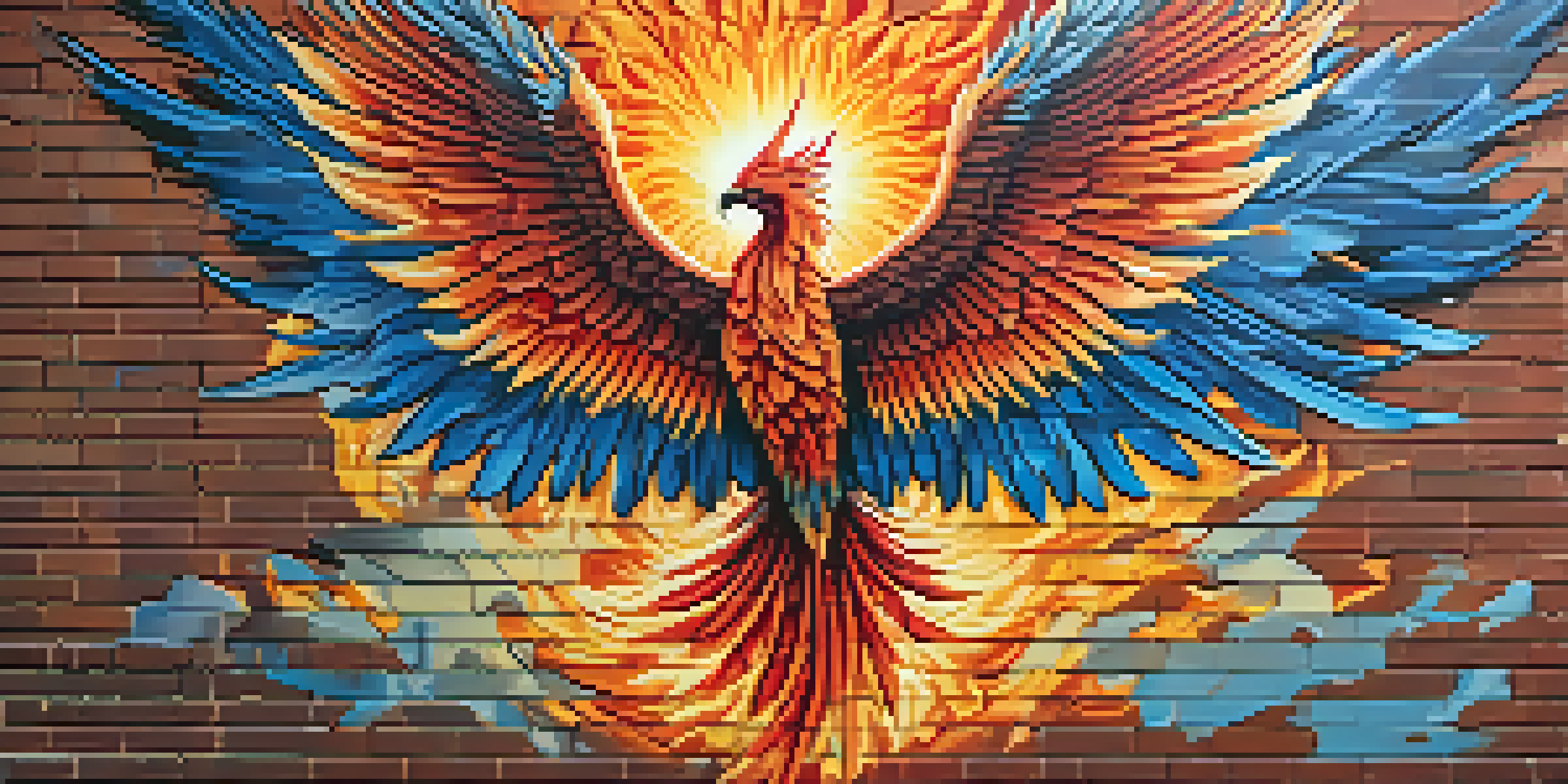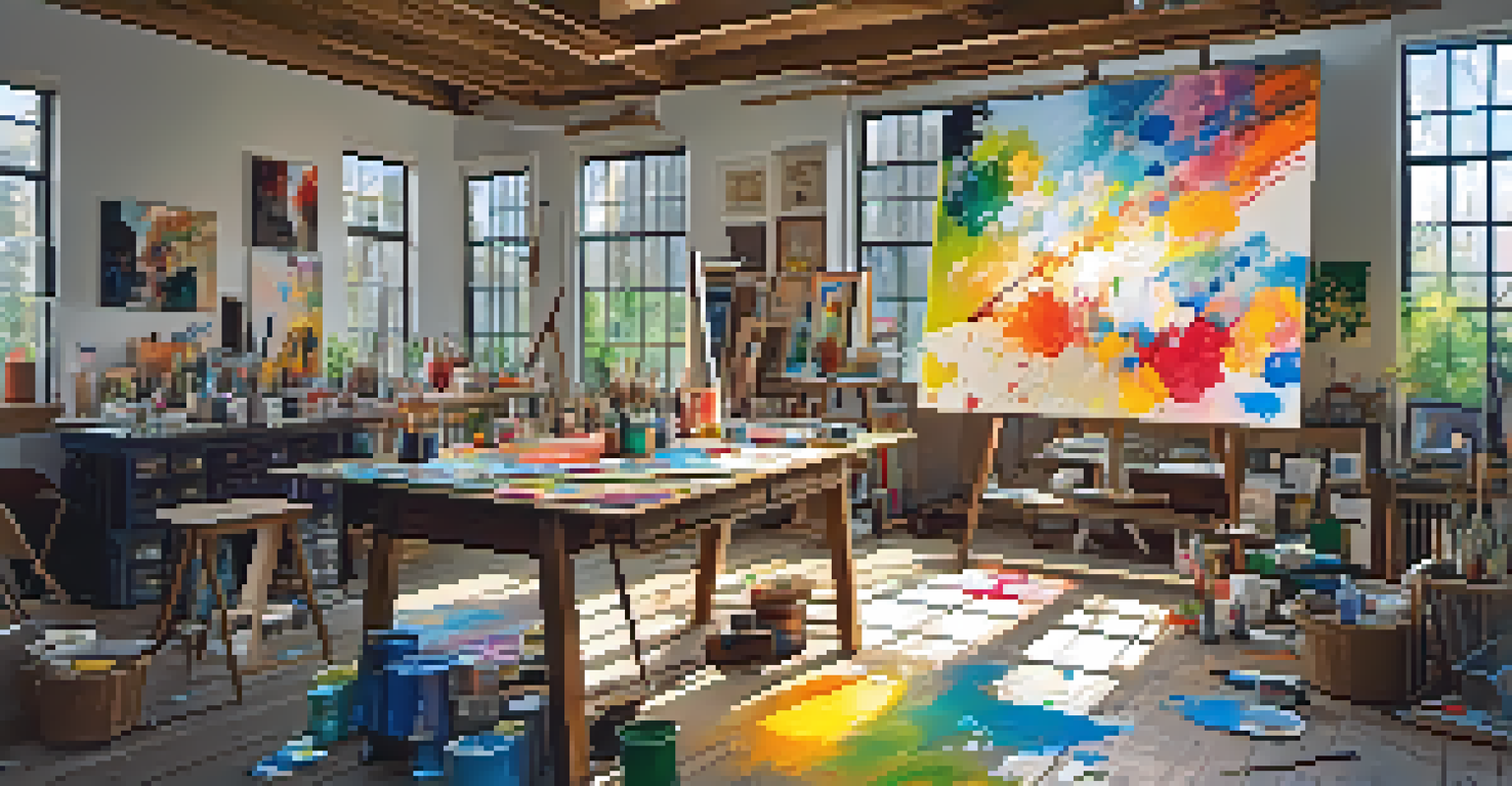Censorship in Art: Political Control over Creative Expression

Understanding Censorship in the Art World
Censorship in art can be defined as the suppression of creative expression due to political, moral, or social reasons. It manifests in various forms, from outright bans on artworks to subtle pressures that influence artists' choices. Understanding this phenomenon is crucial, as it highlights the tension between freedom of expression and societal norms.
Art should comfort the disturbed and disturb the comfortable.
Throughout history, artists have faced censorship in many forms, often as a reflection of the political climate of their times. For instance, during the Soviet era, many artists were forced to align their work with state-approved themes. This historical context helps us appreciate the ongoing struggles artists face regarding their autonomy and the messages they wish to convey.
Today, censorship can be as overt as government regulations or as insidious as self-censorship, where artists modify their work to avoid backlash. This duality raises important questions about the true cost of artistic freedom and the voice of dissent in society.
The Role of Government in Artistic Censorship
Governments often justify censorship as a means of maintaining social order or protecting national security. This rationale can lead to the suppression of artworks that challenge political authority or social norms. For example, in countries with authoritarian regimes, artists may find their work closely monitored to ensure it aligns with the state’s agenda.

The impact of government censorship can be far-reaching, influencing not only the artists but also audiences who are deprived of diverse perspectives. When certain voices are silenced, society loses out on the opportunity to engage with critical issues through art. This creates a homogenized cultural landscape that stifles innovation and dialogue.
Censorship Limits Artistic Expression
Censorship in art, whether from governments or self-imposed, restricts the creative freedom of artists and diminishes the diversity of perspectives in society.
Moreover, the digital age has made it easier for governments to impose censorship through surveillance and control of online platforms. Artists must navigate this complex terrain, often risking their safety and freedom to express dissenting views.
Art as a Tool for Political Resistance
Despite censorship, art has historically served as a powerful tool for political resistance. Artists have used their work to confront oppressive regimes, often at great personal risk. For example, during the Apartheid era in South Africa, artists used music, literature, and visual art to challenge the status quo and inspire social change.
Every artist is a censor. Every artist is a critic. Every artist is a participant in the political process.
Through creative expression, artists can communicate messages that resonate with people's experiences of injustice and inequality. This ability to evoke emotions and spark conversations makes art an essential medium for activism. By highlighting social issues, artists can mobilize communities and foster a sense of solidarity.
In many cases, art emerges as a form of protest, where the very act of creation becomes a statement against censorship itself. This resilience showcases the undying spirit of human creativity, proving that even in the face of repression, the desire for expression cannot be entirely extinguished.
The Impact of Self-Censorship on Artists
Self-censorship occurs when artists modify or restrict their work to avoid backlash or negative consequences. This phenomenon is often driven by fear—fear of rejection, persecution, or alienation from audiences. Consequently, self-censorship can severely limit an artist's creative potential and the diversity of perspectives in the art world.
For many artists, the pressure to conform can be overwhelming, leading them to second-guess their ideas and messages. This internal conflict can stifle innovation, as artists may shy away from exploring challenging themes that provoke thought and discussion. The result is a diluted artistic expression that fails to capture the complexity of real-world issues.
Art as Resistance Against Oppression
Throughout history, artists have used their work as a powerful means of political resistance, challenging oppressive regimes and inspiring social change.
Ultimately, self-censorship highlights the intricate relationship between art and societal expectations. By understanding this dynamic, we can better appreciate the courage it takes for artists to remain true to their vision in the face of pressure to conform.
International Perspectives on Art Censorship
Censorship in art is not confined to any single country or culture; it is a global issue. Different nations approach censorship with varying degrees of severity, influenced by their political systems, cultural values, and historical contexts. For instance, while some Western democracies advocate for artistic freedom, they too face challenges related to political correctness and public sentiment.
In contrast, countries with strict authoritarian regimes often impose harsh penalties on artists who dare to speak out against the government. These artists risk imprisonment or exile for their work, illustrating the stark differences in how art is valued and protected around the world. This disparity brings to light the importance of international solidarity among artists and advocates for freedom of expression.
Global movements and organizations work tirelessly to support artists facing censorship and to promote the importance of artistic freedom. By sharing stories and resources, these efforts help raise awareness about the challenges faced by artists worldwide and inspire collective action against censorship.
The Internet's Role in Challenging Censorship
The rise of the internet has transformed the landscape of artistic expression, providing new platforms for artists to share their work without traditional gatekeepers. Social media, blogs, and digital galleries allow artists to reach broader audiences, often circumventing state-controlled channels. This democratization of art offers a glimmer of hope in the fight against censorship.
However, the internet also presents its own challenges. While it can empower artists, it can also expose them to online harassment and censorship by tech companies. Platforms may remove content deemed controversial or offensive, sometimes aligning with governmental pressures. This creates a precarious balance between freedom of expression and the rules imposed by digital platforms.
Internet Empowers Artistic Freedom
The internet has opened new avenues for artists to share their work and challenge censorship, although it also poses risks of online harassment and platform censorship.
Despite these challenges, the internet remains a vital tool for fostering dialogue and showcasing diverse artistic voices. By harnessing the power of digital technology, artists can continue to challenge censorship and advocate for their rights in an increasingly complex world.
Promoting Artistic Freedom: What Can Be Done?
Promoting artistic freedom requires a collective effort from individuals, organizations, and governments. Advocating for policies that protect artists' rights is crucial, as is supporting organizations that work to defend free expression. This includes raising awareness about censorship issues and encouraging open dialogues about the importance of diverse voices in the arts.
Additionally, individuals can play a role by actively engaging with art that challenges societal norms, whether through attending exhibitions, sharing works on social media, or supporting artists directly. By creating a culture that values artistic expression, we can help combat the forces of censorship that seek to stifle creativity.

Ultimately, fostering an environment where artists feel safe to express themselves is vital for the health of any society. By standing in solidarity with artists and promoting their work, we contribute to a richer cultural landscape that celebrates creativity and challenges the status quo.